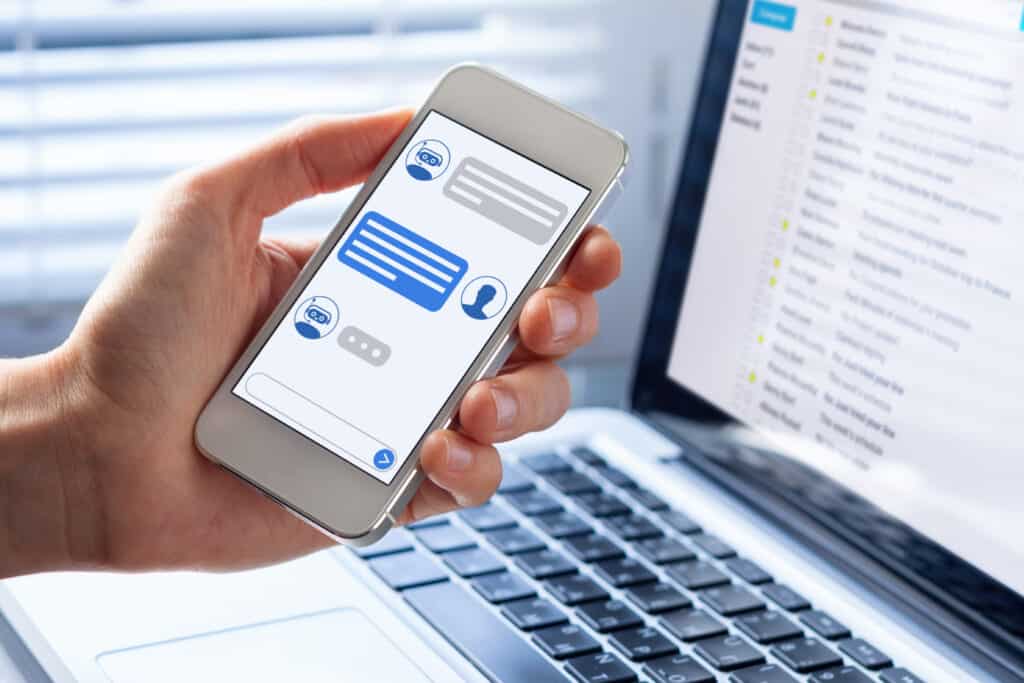Killer Customer Service Ecommerce Strategies for Online Businesses
With 2020 shuttering many brick-and-mortar retail stores, business owners have mostly lost the ability to make customer impressions in-person.
However, with the surge of ecommerce in 2020 and a huge switch to online purchases, entrepreneurs have gained an even greater customer service tool.

In many ways the mandated health guidelines that pushed everyone six feet back in real life have also catapulted the virtual world forward.
We’ve seen that traditional marketing tactics are no longer necessary to develop a strong relationship with consumers or build a reputation.
Building that loyal following continues to grow online with a variety of methods used to woo and pursue potential buyers who’ve already adapted to this form of persuasion.
Below are some guidelines to help you continue to engage and retain shoppers for your online business using killer customer service techniques.
FOLLOW CUSTOMERS THROUGH THEIR PURCHASE
Let’s be honest, if most of us had the experience of a retailer following you aimlessly throughout the store it would probably get annoying, maybe even a little bit creepy.
However, take that situation and transfer it online and it completely changes. The reason is because we don’t see that literal footprint.
The interaction shouldn’t stop after a purchase is complete. Follow them, in a non-stalker way.
Keeping consumers on your radar provides valuable feedback to your business while making them feel special. This process helps your business keep current customers, making a significant mark on your brand’s overall success.
This is where the set up of an automated post-purchase campaign comes in.
Implementing this into your ecommerce business model is a sure-fire way to improve customer satisfaction and further nurture those budding relationships, ultimately resulting in improved ROI.
The order confirmation email
Set up an order confirmation email system that’s delivered to customers immediately following their purchase. Doing this has the two-fold benefit of confirmation of a successful transaction while giving you an opportunity to build on that relationship.
Additional aspects to consider for inclusion within the email confirmation are a show of gratitude that lets them know you appreciate their purchase and support.
The email can also include a few FAQs about your ecommerce business to provide insight into your company or otherwise educate your customer on your brand.
It’s also an opportunity to capitalize on momentum and brand loyalty by cross-selling, offering a few complementary products with inclusion of a “Buy Now” button that takes them directly to those products.
Finally, it’s important to never let an opportunity pass to allow the consumer to ask questions or provide feedback, so make sure your contact information is always included and offers various ways for customers to get and keep in touch.
Educate consumers on your product
The second part of the email campaign should focus on product education and be sent 24 to 48 hours following the delivery of the customer’s order.
The purpose of this email is to give customers personal insight into how they can benefit from their product purchase.
It’s up to you to decide what content is most appropriate to choose but options include a downloadable (PDF) instruction manual or step-by-step guide, FAQ page or video tutorial or even a link to a relatable blog.
The main thing here is to provide valuable content, so make sure you’re doing just that.
Encourage customer reviews
The last part of the post-purchase campaign involved asking customers to leave a review of their experience. Ultimately, customer reviews are compelling social proof, providing positive influence on future consumer behavior.
The third email should be sent between three and four days after product delivery. The few day delay gives customers a chance to use your product and form a genuine opinion about it.
Many customers look forward to this part of the process because it shows them you care about what they think and are willing to be transparent. Additionally, this tool is valuable in revealing where you’re doing well and where you’re missing the mark.
Reviews also help line up future sales since most online shoppers read reviews themselves before committing to a purchase. Don’t you?
LISTEN TO AND INCORPORATE CONSUMER FEEDBACK
There’s something in the marketing world referred to as a social listening tool that’s used by businesses to search specific keywords or phrases, revealing a list of all mentions across various platforms.
Twitter offers one and so does Hootsuite.
The resource is a focused way for your ecommerce business to receive truthful insight into what people think about your brand, product and their customer experience.
After collecting this information, you can use it to generally interact with your target market or personally thank loyal customers for their support. It can also be used to tweak your product based on consumer feedback in a way that makes it better.
Here are a few ways to use this tool to your benefit:
Add Value to Their Lives: Your direct responses to their comments and questions can add value to consumer’s lives by giving them information that educates, informs, inspires or motivates them and keeps them coming back for more. Just because they haven’t become a consumer doesn’t mean they aren’t familiar with your brand. Use this to court them into a relationship.
Boost Retention: Since you can access people who are talking about your brand but might not be customers yet—use that to your advantage! Reply to people who have questions about your products or the purchase process so you can get them to convert.
Extend Your Brand: Remember to use your brand’s voice in any responses to consumers. Doing this reinforces your business’ core values and provides your audience with a sense of trust and authenticity.
Revisit FAQs: Comments from consumers can help simplify problems within your brand if you’re open to suggestions and don’t take things personally. For example, recurring clarifications, questions and even misunderstandings can make for a relevant reason to update this section of your website.
Put Out Fires: Some people say that no news is good news, but in social media, silence is deadly. If you don’t have it now, start growing thicker skin! Being open and accountable to negative comments, constructive criticism, unsatisfied customers and naysayers can be used in your favor. The fact that someone is taking the time to even leave a comment gives your brand a significant opportunity to respond professionally and ideally handle the situation right away.
MAKE IT SIMPLE FOR CUSTOMERS TO REACH YOU
Customers value brand interactions, especially on social media. So, if you’re not already running a omnichannel customer service strategy for your ecommerce business, it’s high time you make that change.
One of the simplest ways to improve a customer service strategy is by giving online consumers a choice when it comes to their preferred support method. This ensures your business has the best odds of reaching them and holding their attention, while it becomes the easiest way for them to contact you.
Call me!
Despite the explosion of online options when it comes to interacting with a company, nearly 50 percent of consumers still choose the phone for direct contact.
That being the reality, offering a customer support helpline is a good strategy if phones can be adequately staffed with personable, informed representatives.
GETTING IT RIGHT
A consumer finding your number shouldn’t be a game of hide and seek. Make it easy to find your contact information.
Have a list of questions and answers available for representatives to refer to when speaking with customers. The same few issues are likely to come up so there should be a textbook way to address them.
In addition, giving your call service employees the authority to be creative when addressing customer-related problems and humanizes the company representative, making the circumstance more relatable. However, there should be clear boundaries regarding the types of solutions they can offer.
If introducing a hotline into your ecommerce business is something you want to do but don’t have the staff for, you can outsource telephone support to a call-center.
Apps such as OpenPhone allows you to run your business’ customer support line from your personal phone—without revealing your number. It’s a great option for small businesses lacking adequate income and not quite ready to scale.
CHATTY KATHY
Live chat is a 21st Century solution for those needing answers now. Chat boxes give your ecommerce business the ability to offer real-time help for consumers short on time.
Insert the live chat widget, an instant message service that businesses can add to their online store, used for shoppers who want an instant response.
Similar to the customer service telephone line, the live chat option should only be made available if you’ve got the support to address needy queries.
If you can’t respond quickly, just stick to the last option.
Although seemingly archaic, (at least for Generation Z and some millennials), email is the communication tool of choice for customer service for more than 40 percent of consumers.
What’s great for your business is that since it’s email consumers aren’t expecting an immediate response.
SOCIAL MEDIA
More than likely, social media will be the main place to communicate with your audience.
Ecommerce brands use Facebook, Instagram and Twitter accounts dedicated to customer service to keep customers updated on shopping-related aspects.
However, you don’t need to create a separate account for your social profile. Instead, consider integrating social media comments and direct messages into your dashboard with service helpdesks.
When it comes to providing killer customer service, there are a lot of things to implement to improve your ecommerce business.
Remember to remain accessible and transparent, open to criticism, and respectful and quick to respond. This will lead to new and blossoming consumer relationships.

